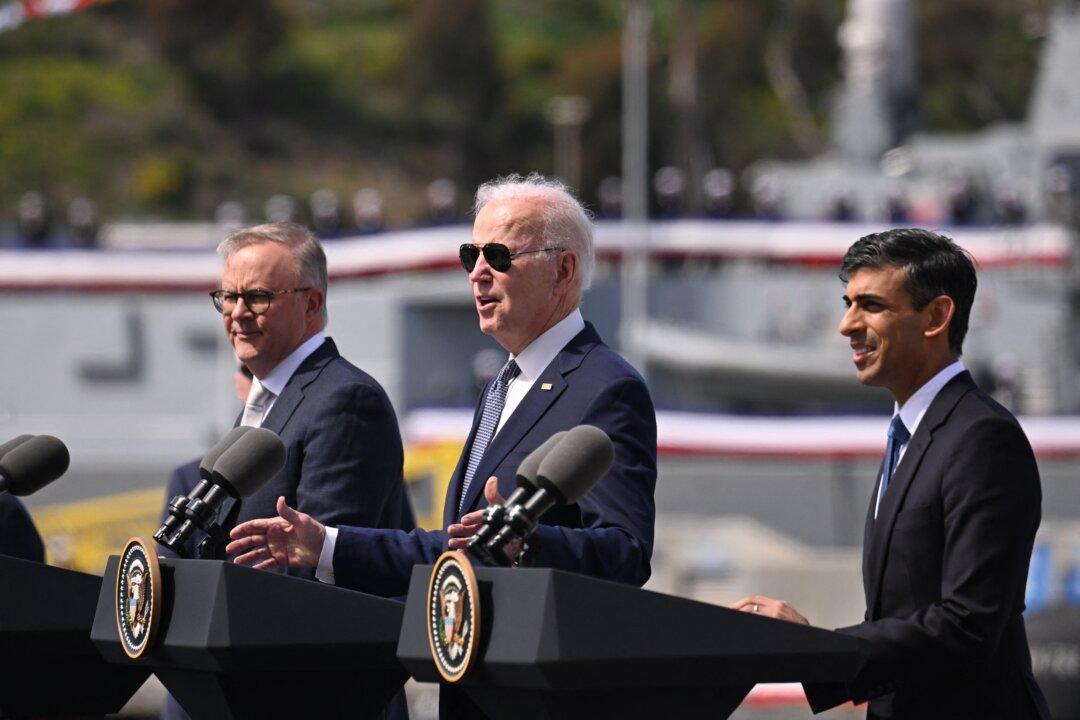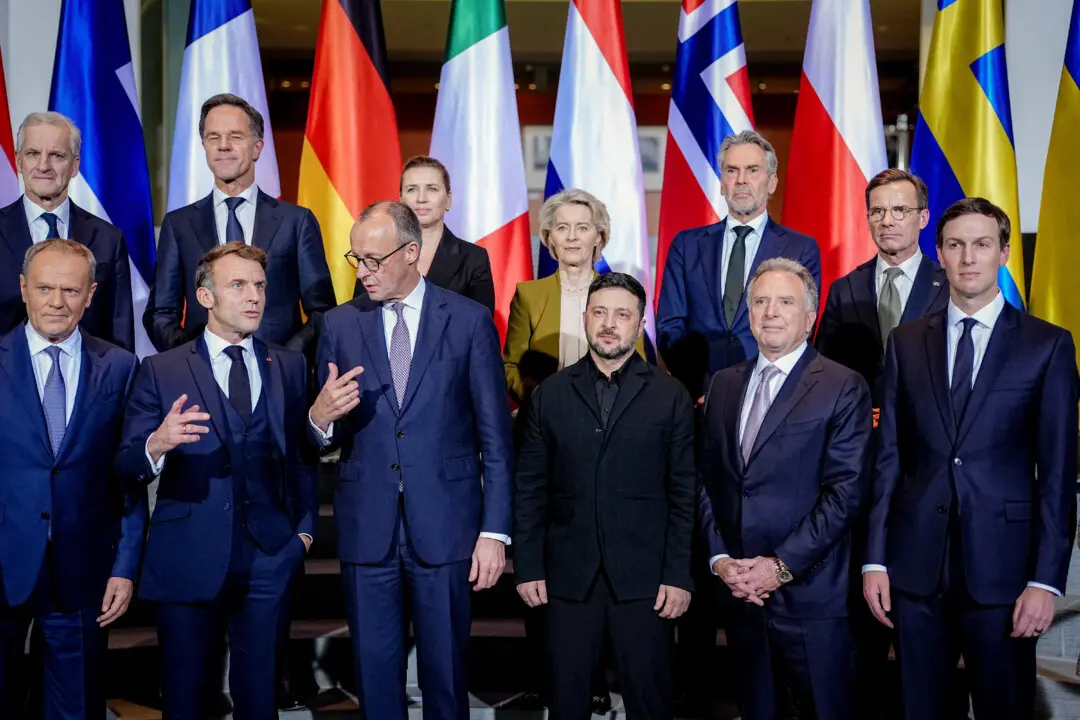SAN DIEGO—Australia will purchase up to five nuclear-powered attack submarines over the next decade as part of a much-anticipated agreement formally announced on March 13 by U.S. President Joe Biden, Australian Prime Minister Anthony Albanese, and UK Prime Minister Rishi Sunak in California.
Under the agreement, Australia will buy three Virginia-class hunter submarines by the early 2030s, with an option to buy two more—perhaps Los Angeles-class attack subs—as part of the trilateral security pact known as AUKUS.






